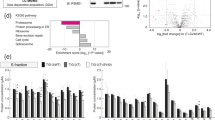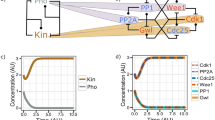Abstract
Electrophoretic mobility shift assays were used to analyse the pattern of E2F transcription factor complexes containing pRB and related `pocket' proteins associated with changes in growth of monkey CV-1 cells. Little change was noted in pRB/E2F complexes following growth arrest or serum stimulation. Serum starvation induced the formation of a novel slowly-migrating p130/E2F complex, termed C7, which was comparable to one reported previously in terminally differentiated C2C12 mouse cells (Corbeil et al., 1995, Oncogene 11, 909 – 920) and thought to contain one or more additional unidentified proteins. After serum stimulation, C7 complex disappeared in S-phase but returned during mitosis. A major E2F complex containing p107 appeared during S-phase but was undetectable at other times. It appeared likely that regulation of pRB, p107 and p130 occurs by several mechanisms. First, phosphorylation has previously been proposed to be involved. All pRB-related proteins were found to be highly phosphorylated during S-phase when E2F activity was highest, and hypophosphorylated in arrested cells when E2F activity was low. Second, the absolute levels of some members of the RB family varied during the cell cycle. Levels of pRB protein and pRB/E2F complexes changed little; however, the amounts of both p107/E2F and p130/E2F complexes varied according to the overall levels of p107 and p130 proteins. Formation of the novel C7 complex in serum arrested cells suggested a third regulatory mechanism mediated by interactions with additional proteins. Our studies indicated that binding of such proteins with p130/E2F occurred via a site in the `pocket' similar to that utilized by adenovirus E1A proteins. Such proteins could function as additional regulators of E2F-driven transcription.
This is a preview of subscription content, access via your institution
Access options
Subscribe to this journal
Receive 50 print issues and online access
$259.00 per year
only $5.18 per issue
Buy this article
- Purchase on Springer Link
- Instant access to full article PDF
Prices may be subject to local taxes which are calculated during checkout
Similar content being viewed by others
Author information
Authors and Affiliations
Rights and permissions
About this article
Cite this article
Corbeil, H., Branton, P. Characterization of an E2F-p130 complex formed during growth arrest. Oncogene 15, 657–668 (1997). https://doi.org/10.1038/sj.onc.1201224
Received:
Revised:
Accepted:
Issue Date:
DOI: https://doi.org/10.1038/sj.onc.1201224



